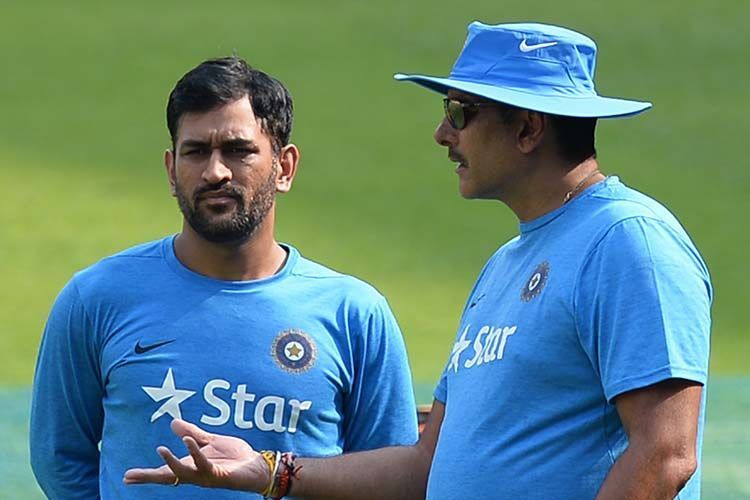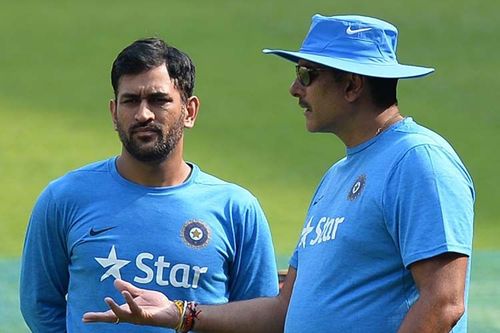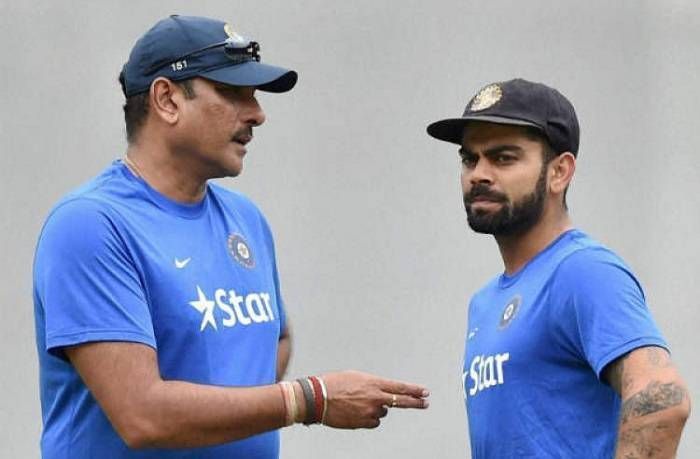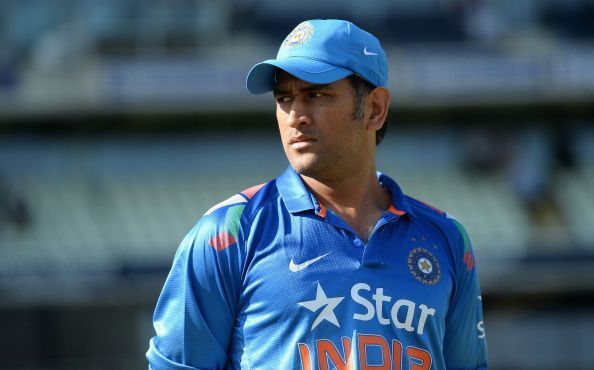
Why blame MS Dhoni when we have a confused team management?

Every sportsperson, no matter how great a player he is, has to face retirement speculations at the twilight of his career. Sachin Tendulkar faced it, Roger Federer faced it, Sir Alex Ferguson faced it as well. Currently, MS Dhoni is experiencing the fickle nature of the outside world.
Given Dhoni’s history, it is quite certain that he isn’t someone who overstays his welcome. We all anticipated his retirement from Test cricket, however, when he actually announced it, everyone was shocked. When he decided to relinquish his captaincy, everyone was shocked then too.
So, why should we blame Dhoni, when it’s the team management that is not making use of his potential, sending him at the wrong batting position?
The Great Indian No. 4 conundrum
The team management and selectors quickly solved India’s spin woes that were brought to light in the Champions Trophy.
The Men in Blue now have a stable combination of Axar Patel, Yuzvendra Chahal, and Kuldeep Yadav who not only control the run rate in the middle overs but also take crucial wickets.
In Jasprit Bumrah and Bhuvneshwar Kumar, the limited-overs team has a potent strike force backed by competent replacements such as Umesh Yadav, and Mohammad Shami.
While the think-tank must be lauded for their efforts in that aspect, they must also be criticised for bringing about the mayhem that exists in the Indian middle order in limited-overs cricket. In 2017, India have tried the following batsmen at number 4, with limited success:
Yuvraj Singh – 8 ODIs
Hardik Pandya – 5 ODIs
Dinesh Karthik, Kedar Jadhav – 3 ODIs each
Manish Pandey – 3 ODIs
KL Rahul – 1 ODI
Interestingly, the selectors first talked up Rahul, an opener by trade, for the number 4 position. As you can see, Rahul ended up playing just one innings at no. 4.
Pandey, who looked the best bet for the number 4 slot, played only three innings at that position, while Hardik Pandya was sent five times at no. 4, more as a pinch-hitter than as a proper batsman.
The team management can be forgiven for trying out various options and having flexibility before finalizing the World Cup squad. However, that same amount of time can be instead used to try and fix a batting spot for MS Dhoni.
Should MS Dhoni be used as a floater?

When India toured Australia in January 2016, Dhoni made a significant statement. “I cannot attack from the word go anymore, I need to spend some time in the middle," he had said before a game in Melbourne.
It was the first time that Dhoni had admitted his diminishing prowess. It should have prompted the think-tank to make a decision and allocate him a permanent batting spot higher up the order. However, in 2017, Dhoni has played nine innings each at number 5 and 6 whilst he has also found himself at no. 7 three times.
The 36-year-old has an average of 56.85 with a respectable strike rate of 88.24 at number 5. At no. 6, his average increases - mainly due to five not outs - but, crucially, his strike rate declines to 76.89. It is now a well-known fact that no. 7 is no longer suitable for Dhoni and yet, he played three innings at that spot.
In T20 internationals, the former captain has played four innings at no. 5, three innings at no. 6 and one innings at no. 4 in 2017. His strike rates give a perfect reflection of how he has lost his abilities to go big and instead prefers to accumulate runs – 155 at no. 4, 139 at no. 5 and a modest 111 at no. 6.
In all their experiments, the team management, surprisingly, have not tried the 36-year-old even once at No. 4 in ODIs while he has batted at No. 4 only once in T20Is. For the record, the veteran has played 26 innings at number 4 in ODIs with a healthy average of 58.23 and an impressive strike rate of 94.8. In T20Is, he has played 10 innings at no. 4, averaging 51.25 (career average 35.58) and striking at 147.48 (career strike rate 123.41).
The top three batting positions in India’s limited-overs squad are fixed, with the two openers and Virat Kohli. Similarly, for someone as experienced as Dhoni, there has to be a fixed batting spot. The higher he bats, the more effective he is and hence he should be fixed at no. 4 or 5.
The logic of having floaters in the team is sound, but having four of them in Pandey, Pandya, Jadhav (or Karthik) and Dhoni creates confusion and a lack of cohesion in the middle-order.
Puzzling debate on Dhoni’s T20I retirement

There have been opinions circulating suggesting Dhoni should retire from T20Is. Among them, VVS Laxman made a prominent statement after the Rajkot T20I against New Zealand, which India lost. “I still feel it's time for MS Dhoni to give youngsters a chance in the T20 format. It will be an opportunity for a youngster to blossom and get confidence playing international cricket. He is definitely an integral part of ODI cricket though,” he had said.
Interestingly, during the mid-innings show of the next match, Laxman suggested that Dhoni should have batted at number 4. If Dhoni can bat at no. 4 in a rain-affected 8-overs-a-side match, then, surely, he can bat at no. 4 in a full-fledged T20 match.
What’s more surprising is that opinions seem to be divided only about Dhoni’s place in the T20I side. Everyone seems to believe that he is still an integral part of the ODI team. Well, if the team management keeps sending him at no. 6 and 7, people will probably start calling for the former skipper’s retirement from ODIs as well.
Everyone needs to understand that Dhoni has already retired from Tests, and hence needs to play in as many limited-overs international matches as possible. 2018 is going to be packed with away series, so it is imperative that the 36-year-old plays all the ODIs and T20Is, to be in the best possible shape for the World Cup in 2019.
Additionally, the icon from Ranchi is one of the most pragmatic cricketers and if he thinks that he can be a part of the 2020 T20 World Cup, then the debate should end at that.
So, the question should not be whether or not Dhoni should retire from T20 Internationals. The question should be whether the team management is prepared to find a permanent solution to his batting position.